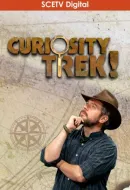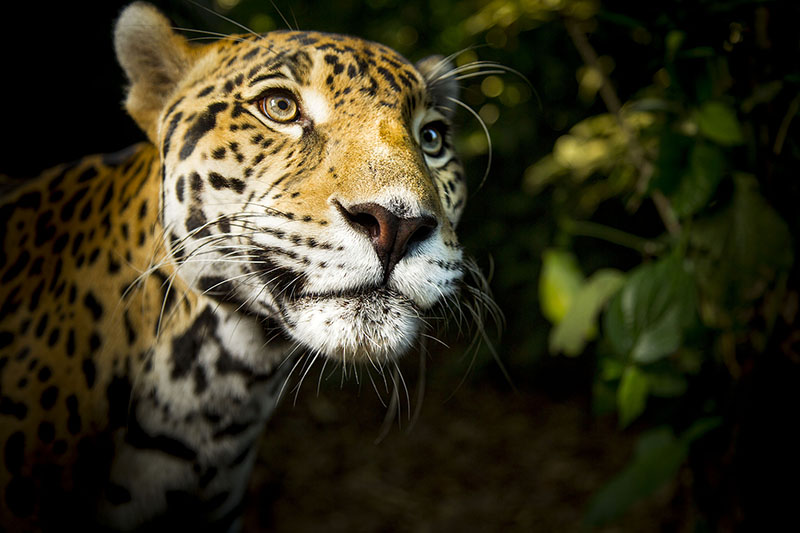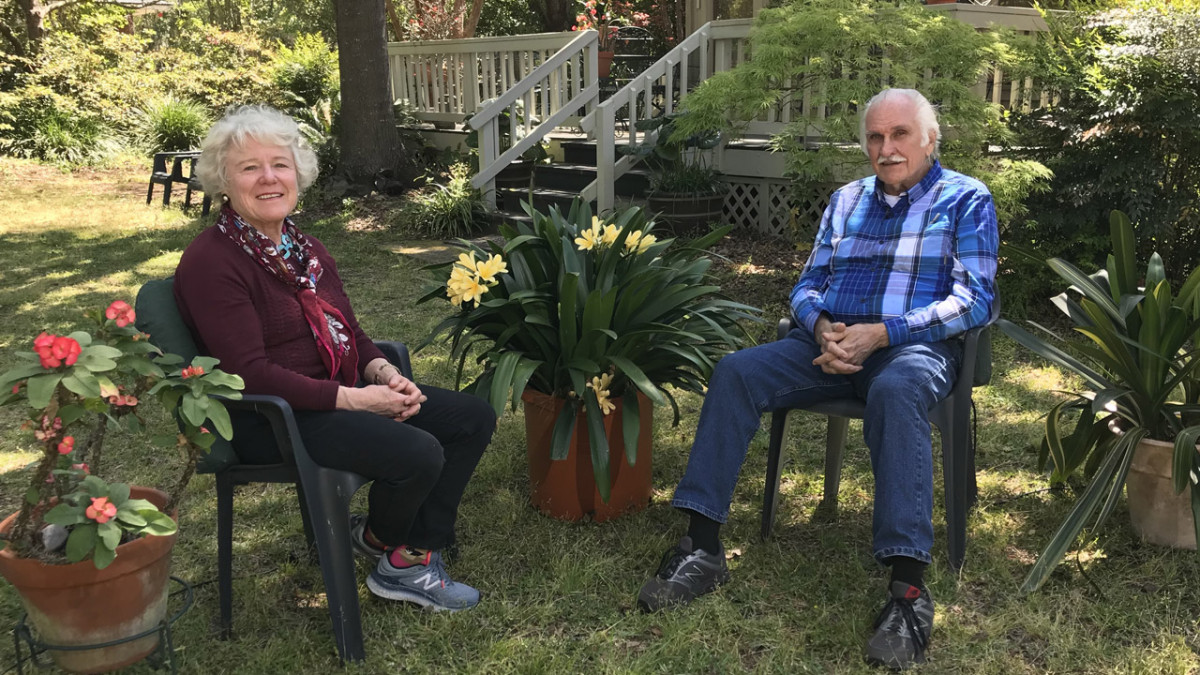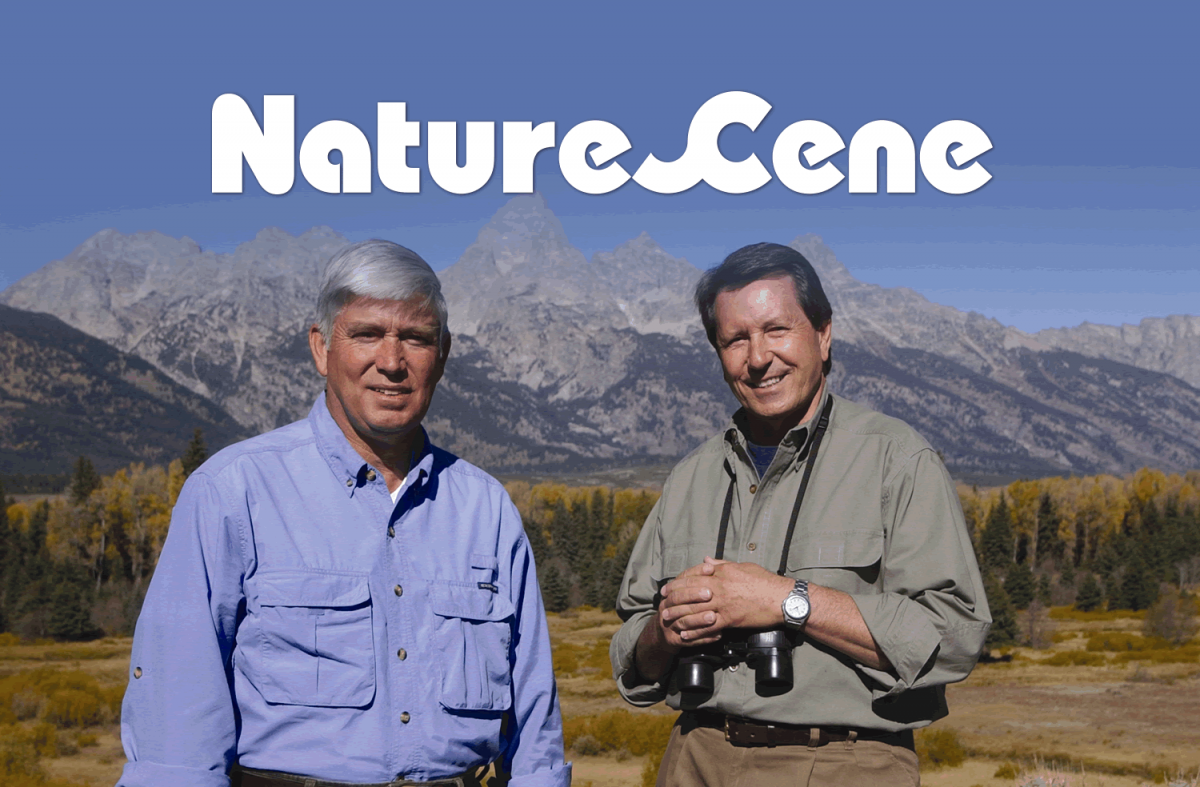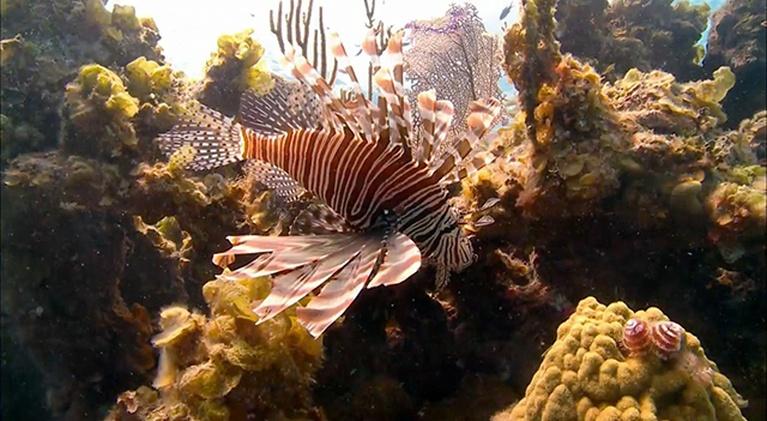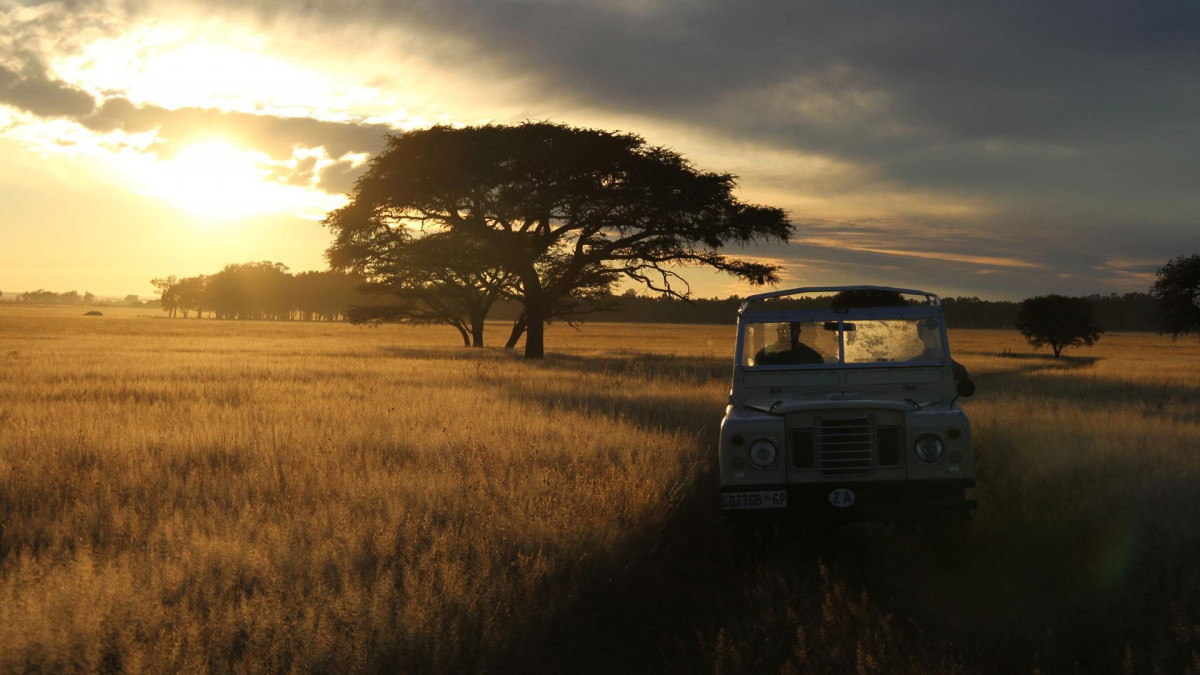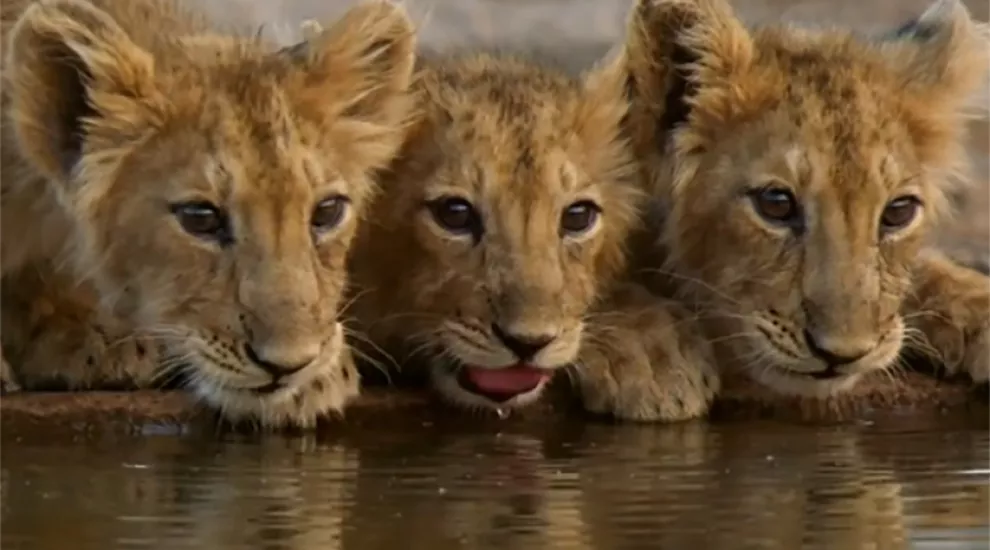
If you've missed these awe-inspiring nature programs on South Carolina ETV, now is a great time to catch up!
View them from the SCETV App or view online! Download the SCETV App from the iTunes App Store or the Android Store.
Scroll to browse or click the quick links below.
ANIMALS & PLANTS
1. NATURE: A Life Among the Clouds
Join Lisa Dabek and her team with Woodland Park Zoo’s Tree Kangaroo Conservation Program as they journey into the remote cloud forests of Papua New Guinea. Meet one of the most elusive creatures you will ever see in the wild – the Matschie’s tree kangaroo. See how the local people are helping to protect this rare marsupial and its forest home.
2. NATURE: Keep Calm and Tend to 20,000 Bees - Backyard Nature
Studies show that immersing yourself in nature can benefit your health, so watch the videos below to connect with and appreciate nature.
3. NATURE: Sex, Lies and Butterflies
Explore the astounding abilities of butterflies – deceptive camouflage, chemical weaponry, and fantastic flight. Look beyond their bright colors and fragile beauty as you follow them on one of the greatest migrations on Earth.
NATURE: EQUUS "STORY OF THE HORSE"
4. NATURE: EQUUS "STORY OF THE HORSE" Episode 1 Origins
The relationship between man and his noble steed is almost as old as civilization itself, allowing our species to explore, conquer and flourish side by side with the horse. NATURE traces this revolutionizing partnership with anthropologist Niobe Thompson in this two-part series.
5. NATURE: EQUUS "STORY OF THE HORSE" Episode 2 Chasing the Wind
Discover how humans have partnered with the horse throughout the centuries, creating more than 350 breeds found all around the world.
Love is all around in the natural world, and it deserves to be celebrated! Whether it's affection between mothers and babies, lifelong mates, or unlikely friends, many animals have a special way of showing their love and kinship.
7. NATURE: Undercover in the Jungle
Go undercover with a film crew on a perilous journey to the untouched wilderness of biodiversity in the Amazon rainforest. Meet some of the most incredible creatures, from pygmy marmosets to pumas, as the wild secrets of the jungle are revealed.
Austria’s Kalkalpen National Park is the largest tract of wilderness in the Alps, but it wasn’t always that way. The park was once the site of major logging and mining operations, but those activities ceased more than two decades ago. Three years in the making, Forest of the Lynx chronicles life in this remote wilderness and the complex partnerships among plants, insects, animals and trees.
9. NATURE: Living with Snow Leopards - Tashi's Story - A NATURE Short Film
In the frigid Indian Himalayas, people manage to eke out a living alongside one of Asia’s most elusive cats: the snow leopard. Explore this fragile relationship through the eyes of Tashi, a local goat herder, and learn how his village has partnered with the Snow Leopard Trust to find ways to both live with and save one of the rarest cats on Earth.
NATURE: OKAVANGO
10. NATURE: OKAVANGO: Episode 1: Pardise
Experience the wildlife of the Okavango Delta, an unlikely oasis and lush paradise in Southern Africa that connects and supports a wide array of creatures. Lions chase elephants, who chase hippos, who chase crocodiles. F. Murray Abraham narrates.
11. NATURE: OKAVANGO: Episode 2: Limbo
Delve into the landscape and wildlife of the “Middle World,” the delta of the Okavango River. In the most dynamic and lively part of the river, long caravans of elephants travel along the water, and Pied kingfishers hover before diving in for fish and frogs. Hyena and warthog families share neighboring dens, helping each other by keeping an eye on threatening predators.
12. NATURE: OKAVANGO: Episode 3: Inferno
Discover the landscape and wildlife of the Lower Okavango River, where the land is baked dry by the scorching sun of the Kalahari Desert and animals must adapt to the extreme environment.
13. NATURE: Running with the Herd: A NATURE Short Film
Biologist Jack Hogg has been studying a herd of wild bighorn sheep on Montana’s National Bison Range for more than 35 years. When Jack’s herd gets infected with a deadly form of pneumonia, he goes in search of answers.
14. NATURE: The Serengeti Rules
Travel back in time, from the Arctic Ocean to Pacific tide pools, with a pioneering group of scientists who make surprising discoveries that transform human understanding of nature and ecology. Based on a book of the same name, The Serengeti Rules had its theatrical premiere at Tribeca Film Festival and has won awards at the 2018 Wildscreen Panda Awards and Jackson Hole Science Media Awards.
15. NATURE: Spend an Hour in Snowy Yellowstone: Sights and Sounds
Sit back, relax, and experience the animals, landscapes, and awe of Yellowstone National Park in winter.
16. NATURE: Yosemite
Yosemite Valley is a land forged in wildfire and sculpted by water; the delicate balance of these two elements is essential to the creatures and trees that call this land home. But with climates changing and temperatures rising, the Sierras are under siege. Scientists, experts and adventurers head into Yosemite to see how these global changes are affecting one of America’s greatest wildernesses.
See the world through the eyes of nature’s fastest animal: the peregrine falcon. Though once perilously endangered in the U.S., this spectacular predator is now thriving again in American cities and on every continent but Antarctica. What is the secret to its predatory prowess? Join expert falconer Lloyd Buck as he trains a captive peregrine and puts its hunting skills to the test.
21. Deep Look: How Your Dog’s Nose Knows So Much
Dogs have a great sense of smell, but what makes their noses so powerful?
EONS
Join hosts Hank Green, Kallie Moore, and Blake de Pastino as they take you on a journey through the history of life on Earth. From the dawn of life in the Archaean Eon through the Mesozoic Era — the so-called “Age of Dinosaurs” -- right up to the end of the most recent Ice Age.
22. How Plants Caused the First Mass Extinction
At a site known as Cerro Ballena or Whale Hill, there are more than 40 skeletons of marine mammals -- a graveyard of ocean life dating back 6.5 million to 9 million years ago, in the Late Miocene Epoch. But the identity of the killer that they finally settled on might surprise you.
INSIDE NATURE'S GIANTS
24. INSIDE NATURE'S GIANTS: Big Cats
Veterinary specialists and biologists perform an autopsy on a large wild animal to uncover the secrets of its anatomy. The series features veterinary scientist Mark Evans, comparative anatomist Joy Reidenberg and evolutionary biologists Richard Dawkins and Simon Watt.
25. INSIDE NATURE'S GIANTS: Camel
Mark Evans and Joy Reidenberg brave the baking desert to dissect a camel. They uncover the secret of the camel’s hump and investigate how its elastic legs, stretchy lips and pedestal (a strange bump on its chest) are among the many surprising adaptations that enable the camel to thrive in such a dry and hostile environment.
26. INSIDE NATURE'S GIANTS: Giant Squid
The team travels to New Zealand to examine one of the biggest yet most mysterious animals on Earth — the giant squid. Delving into its three hearts, razor sharp beak, tooth-covered tentacles and bizarre reproductive system, the team explores the anatomy of a deep-sea alien that’s never been observed in the wild.
27. INSIDE NATURE'S GIANTS: Great White Shark
The experts travel to South Africa to dissect a 15-foot-long great white shark. Comparative anatomist Dr. Joy Reidenberg uncovers the amazing array of senses the shark possesses, including the ability to detect the electro-magnetic field given off by other creatures.
28. INSIDE NATURE'S GIANTS: Monster Python
No one knows for sure how snakes native to South East Asia ended up in the Everglades, but now these giant reptiles are thriving in southern Florida's swamps and driving some native species into extinction.
29. INSIDE NATURE'S GIANTS: Sperm Whale
Veterinary scientist Mark Evans and comparative anatomist Dr. Joy Reidenberg dissect a sperm whale’s enormous organs to reveal the secrets of this 45-foot deep-sea giant, which stranded and died on Pegwell Bay, Kent, England.
SCETV LOCAL PROGRAMMING
MAKING IT GROW! - Plants, Foods & South Carolina Culture
Making It Grow is a live call-in program produced by SCETV and Clemson University. Hosted by Amanda McNulty, the crew includes Clemson Extension Resource Agent Terasa Lott, featured Clemson Extension Agents, guests and Dr. John Nelson (USC Herbarium).
30. Pollinator Gardens in Greenwood
Clemson Extension Agent and host of "Making It Grow" Amanda McNulty travels to Greenwood, SC and takes a tour with City of Greenwood Horticulturist Ann Barklow where they have various pollinator gardens. Greenwood, SC is also recognized as a Bee City for their pollinator-friendly initiatives.
Clemson’s Health and Nutrition Agent Angela Forbes visited Sumter with ideas of adding more fresh produce and color to our meals.
32. Hudson's Seafood House on the Docks
As the water temperature gets warmer during the spring months, crabs begin molting their old exoskeleton and remain “soft” until their shells begin to harden over the coming days. Soft-shell crab is the culinary term for crabs that have gone through this process – allowing the entire crustacean to be eaten, rather than having to shell it to reach the meat. To learn more, Team Making It Grow headed down to Hudson’s Seafood House on the Docks and talked with Andrew Carmines about their soft shell crab operation where he also shared some of his favorite dishes.
Making It Grow visits Paradise Plants Plus in Columbia, SC and talks with owner Dan Clayton. Paradise Plants Plus grows camellias from the late 1700’s to about the 1940's. The intrigue is the stories of how they came to be named and of course their beautiful blooms. Dan talks about some of his favorites and alos gives some useful tips on having camellias.
34. Bill and Hildie Lyddan's Garden
Bill and Hildie Lyddan love old houses and creating gardens that compliment the architecture. In their downtown Charleston, SC garden, they did just that and included water features and uses plants for a "green and white" theme.
35. Home Remedies for Longer Lasting Cut Flowers
"Making It Grow" visits with Clemson University Associate Professor Dr. Jim Faust and he shows us an experiment he did with his students using home remedies to make roses last longer in your vase!
36. Victorian Christmas at Historic Columbia
"Making It Grow" toured Historic Columbia to see the variety of holiday decorations and experience past traditions at the Robert Mills House and the Hampton-Preston Mansion. Reservations are available for those wanting to tour and for those that visit, tour guides will provide stories of holidays past in Columbia and discuss how families decorated and entertained during the 19th and early 20th centuries.
"Making It Grow" visits Vertical Roots Farm at the South Carolina State Farmers Market. Andrew Hare talks about how they grow produce in repurposed shipping containers.
38. What Makes South Carolina Oysters So Delicious?
Amanda visits Hudson's Seafood House in Hilton Head to find out why South Carolina oysters are the best in the world.
"Making It Grow" traveled to Bowman, S.C. and visited with Blanche Weathers, wife of S.C. Commissioner of Agriculture Hugh Weathers, to learn how to fry peanuts.
40. Bowens Island Cocktail Sauce
Robert Barber brings in his family's recipe for cocktail sauce, Bowens Island Cocktail Sauce, and shows Making It Grow Host Amanda McNulty and Suzy Ellision from the South Carolina Specialty Food Association some of the ways to use it.
41. The S.C. State Fair's Ride of Your Life Scholarship
The SC State Fair’s Ride Of Your Life Scholarship Program annually awards 50 scholarships to South Carolina high school students planning to pursue their studies at any public or private college, university or technical college in the state. General Manager of the SC State Fair, Nancy Smith, talks about the program and also two recipients (Riley Nordin and Sierra Small) share their story on how the scholarship impacted their lives.
42. The S.C. State Fair: "Meet Me at the Rocket"
With the South Carolina State Fair celebrating its 150th anniversary, historian and author, Dr. Rodger Stroup, discusses a few aspects from his new book “Meet Me at the Rocket” including the State Ball, where the moniker “Big Thursday” came from, and how the fair reflects what’s going on in South Carolina.
Clemson Extension Agent Paul Thompson shares his tips with fellow Agent Amanda McNulty on how to examine a root ball at a nursery or garden center.
Amanda McNulty talks with Clemson Extension Health Agents Paris Mebane and Amber Wilson about hypertension programs they provide while showing us how to make a healthy parfait.
45. Clemson Extension Rural Health and Nutrition Programs
Clemson Extension Rural Health Agent Shanna Sykes talks about Clemson Extension’s rural health and nutrition programs including childhood obesity, infant mortality and also the Baby Café program.
46. Healthy Bread Dip for Hypertension
Clemson Extension Agent Amanda McNulty talks with Clemson Health Extension Agents Shanna Sykes and Emily Moody about hypertension programs they provide. They also make a healthy dip for bread!
Host of "Making It Grow", Amanda McNulty learns about the Food2Market program from Dr. Kimberly Baker and Adair Hoover from the Clemson Extension’s Food Systems and Safety Program Team. Food2Market is a Clemson Extension program designed to help food entrepreneurs through the many steps of food safety regulations that are necessary to prepare food products for sale.
More stories available here.
View weekly programs by scrolling down to Latest Episodes.
NATURESCENE
One of South Carolina ETV's most successful series, NatureScene took viewers for a field trip with naturalist Rudy Mancke from 1978 to 2003. Along with Rudy were hosts Beryl Dakers and Jim Welch, and director of photography Allen Sharpe.
48. A Look Back at NatureScene
NatureScene introduced millions of viewers to a natural world of wonder that the average person might easily overlook. Naturalist Rudy Mancke is paired first with series co-creator Beryl Dakers and later with Jim Welch. Today, Mancke hosts NatureNotes on both SCETV and SC Public Radio. The NatureScene programs featured on Knowitall.org were all produced in South Carolina.
49. Appalachian Cove
Once used as a fortified blockhouse and an Indian trading post, this building and the nearby Richard's House, built in 1805, survived from a time when these foothills were part of the Indian frontier.
Bulls Island is located in the Cape Romain National Wildlife Refuge near Charleston, South Carolina. The refuge was established in 1932. Stretching for 22 miles along the coast of South Carolina, Cape Romain National Wildlife Refuge is a rich natural resource.
51. Cartwheel Bay
Although many Carolina Bays are temporary ponds that hold water only part of the year, these wetlands host a variety of wildlife, providing valuable habitat for such animals as frogs, salamanders, turtles, snakes and alligators. Many birds, such as herons, egrets and migratory waterfowl, live in Carolina bays. Also mammals, such as deer, raccoons, skunks and opossums get food and water from Carolina bays.
Set in South Carolina, the Congaree Swamp is a national treasure. Housed in more than 22,000 acres, it is one of the best and last remaining examples of a mature forested floodplain. Numbers of plants, reptiles, fish, birds, and mammals live in this pristine environment. Congaree Swamp was designated as a National Monument in 1976 and became a part of the International Man and Biosphere Program, preserving genetic diversity. In 2003, the swamp received the honor of becoming a National Park, thus becoming the first and only National Park in South Carolina.
53. Forty Acre Rock
Forty Acre Rock is set in the upper part of the Piedmont region of South Carolina. Forty Acre Rock is actually in the transition zone of the Piedmont and Sandhills. The Piedmont region has been heavily built upon in the past few years and signs of deforestation are evident. This wonderful park, however, remains untouched in its pristine beauty.
54. Jocassee Gorges
Butterflies, dragonflies and other insects abound among the abundant wildflowers on this spring visit to the mountains of northwestern South Carolina. The view from the above steep walled valleys allows us to examine the geology of the rock formations. A lower view form the wetlands unveils an exciting discovery of black bear tracks, located on a beaver pond.
55. Lee State Park
Lee State Park is located in Lee County, around the Lynches River.
In this episode, join hosts, Naturalist Rudy Mancke and Jim Welch at Victoria Bluff in Beaufort, S.C.
57. Old Santee Canal
Considered the first true canal in America, the Old Santee Canal in South Carolina was once an important site for trade and transportation.
58. Peachtree Rock
Delight in the contrasts found at this central South Carolina location reminiscent of western badlands but featuring a nearby waterfall characteristic of mountain areas.
59. Sandy Island
An inland island surrounded by fresh water near Georgetown, South Carolina. Sandy Island provides an opportunity to compare plant communities from high, dry ridges to low, wet areas.
60. Sandy Point
This engaging sojourn along the South Carolina coast includes an up-close look at nesting birds as well as tips on basic beach combing.
61. Santee National Wildlife Refuge
On a springtime visit to this South Carolina wildlife refuge, Rudy and Jim come across beautiful wildflowers, migratory birds and even some alligators.
Along the banks of the Savannah River, natural inhabitants have been challenged by industry, which is altering their environment. Rudy and Jim explore a variety of habitats that have been set aside and studied by the Savannah River Ecology Lab. Despite the intrusion of man, nature’s resilience allows a variety of plants and animals to thrive through out the Savannah River Site.
Venture to the Piedmont and mountains of South Carolina to observe how, overtime, the environment has been modified by man. Join Rudy and Jim as they discover communities of plants and animals that were not affected by those changes.
SCETV NATIONAL PROGRAMMING
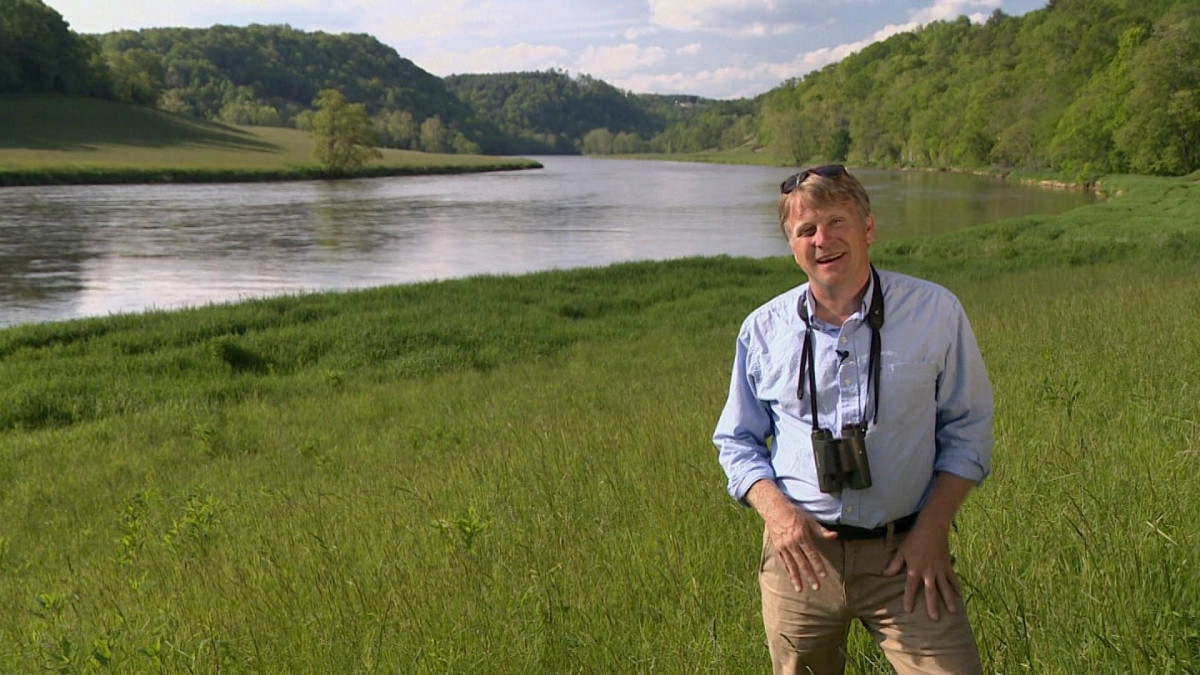
EXPEDITIONS with Patrick McMillan
Naturalist, author, educator and Emmy-winning host Dr. Patrick McMillan embarks on fascinating adventures throughout North and South America in Expeditions with Patrick McMillan. This series overflows with compelling wildlife and wilderness footage captured in the United States and beyond. McMillan's passion and contagious enthusiasm for the natural world is evident as he journeys across America.
SEASON 4
64. California Superbloom: A World of Dramatic Change - Season 4, Episode 1
Once or twice in a lifetime the desert is transformed to a carpet of color and exuberant life. Join Patrick as he explores the deserts of California as they burst with life and color that is gone within weeks of appearing. This short-lived flush is critical to life in the desert. How do plants and animals survive in such a place and just how important is a superbloom?
65. Butterflies: Bringing Butterflies Home - Season 4, Episode 2
Butterflies capture our imagination and our heart with their ephemeral beauty. Join Patrick as he explores the secret lives of butterflies and learn how to manage your landscape to bring these winged jewels into your yard and your life.
66. SOUND: THE FULLNESS OF NATURE, Part 1 - Season 4, Episode 3
Sound is everywhere. It tells us where we are, what time of year it is, and what is around us. Can you imagine an early morning walk without the sounds of nature filling out the picture? Scientists use sounds to help us understand populations, behavior and even ecosystem health. Everyone, regardless of our physical challenges can help to contribute to the conservation of our shared world.
67. SOUND: THE FULLNESS OF NATURE, Part 2 - Season 4, Episode 4
Sound is everywhere. It tells us where we are, what time of year it is, and what is around us. Can you imagine an early morning walk without the sounds of nature filling out the picture? Scientists use sounds to help us understand populations, behavior and even ecosystem health. Everyone, regardless of our physical challenges can help to contribute to the conservation of our shared world.
68. The New River Valley: Ancient Landscapes - Season 4, Episode 5
Ironically, the New River is one of the oldest rivers in the world. For millions and millions of years it has been charting a path through Appalachia. Join Patrick as he explores the unique life that has developed in this ancient valley right along with the traditional use and relationships of humans.
69. Jocassee: The Jewel of the Escarpment - Season 4, Episode 6
One of the last best places on earth – that’s the designation given to this glistening, crystal clear lake and surrounding area by National Geographic. Jocassee is a place that is both well-known and still somewhat unexplored. Waterfalls, gorges, rare plants and animals as well as stunning scenery make this lake one of the most stunning places in the United States.
70. Gardening for Life: Transforming Your Landscape for Life - Season 4, Episode 7
Gardens are much more than a pretty place. They can be an oasis of life in all forms, preserving the nature that brings us so much value and an oasis for us spiritually. Join Patrick as he explores how your landscape can be transformed into a crucible of life. Patrick’s changes at the South Carolina Botanical Garden have made a dramatic impact on the life there.
71. Mountain Bogs: Threatened Heritage - Season 4, Episode 8
One of the most threatened ecosystems in the United States are the Southern Appalachian Mountain Bogs. These small wetlands support many unique and threatened species. The survival of these rare creatures rely on our management and understanding of these systems which are still very poorly understood. Join Patrick as he explores our mountain bogs in a race to understand this ecosystem on the edge.
72. REDISCOVERING CATESBY'S CAROLINA, Part 1 - Season 4, Episode 9
Mark Catesby journeyed to the Carolinas in 1722. The descriptions included in his book, the Natural History of Carolina, Georgia and the Bahama Islands seems outlandish considering the natural communities surrounding us today. Imagine a Carolina where Bison, Elk and Wolves roam vast grasslands, where fire, set by humans shape the land.
73. REDISCOVERING CATESBY'S CAROLINA, Part 2 - Season 4, Episode 10
We cannot understand the present without a clear understanding of the past. Imagine a Carolina where Bison, Elk and Wolves roam vast grasslands, where fire, set by humans shape the land and where Native Americans are still the dominant force managing the landscape.
SEASON 3
74. CATALINA ISLAND - Season 3, Episode 1
Catalina Island sits in the middle of one of the world’s great biodiversity hotspots. It has all the challenges that any island faces but rather than dwindling, life here is thriving. Join Patrick as he explores this magical island and the unique life that has developed and finds a safe harbor here on Catalina.
75. CATALINA ISLAND: The Jewel of the Pacific - Season 3, Episode 2
Every island is unique. The same characteristics that lead to the special and often bizarre wildlife and plants here also make them extremely vulnerable to loss. There may be a place where man and island can exist to the benefit of all. Catalina Island is that jewel of the Pacific. Join Patrick as he continues to explore this land where man and island coexist.
76. West Pecos: The Trans-Pecos - Season 3, Episode 3
When I first visited this corner of the U.S., I was astounded by the beauty and biodiversity that grace this part of Texas, from prairie dogs and antelopes to tarantulas and horned lizards. The Trans Pecos is big, roughly the same size as Maine and stuck right on the border with Mexico. Join Patrick as he explores the strange and exotic life of the Chihuahuan Desert.
77. The Trans-Pecos: A Changing Landscape - Season 3, Episode 4
Change is an integral part of the world and the world appears to be getting a little riskier. Climate is volatile and change in the past has led to the world we live in today. Join Patrick as he continues to explore the Mexican border region of the Trans Pecos a land marked with change.
78. COLORADO'S ROCKY MOUNTAINS - Season 3, Episode 5
Life in the alpine exists on the fringe. It’s hard to believe that life could persist here, let alone flourish. From beautiful alpine flowers to mountain goats and the shy pika, life is abundant. Join Patrick as he explores just how life thrives in the Colorado Rockies, the rooftop of America.
79. COLORADO'S ROCKY MOUNTAINS: Challenges and Changes - Season 3, Episode 6
When you think of the Rocky Mountains, you probably picture a wilderness that is far removed from our influence; that may not be the case. Life is changing here from the alpine lakes to fragile tundra life to the mighty forests of the mountain slopes. Join Patrick as he explores the challenges and changes that are happening in the Colorado Rockies.
80. SOUTH TEXAS: A Hint of the Tropics - Season 3, Episode 7
This is a place that few of us will ever visit. It’s packed with biodiversity. Many of the plants and animals that are found here can be found no place else in the United States and their future is tied to a connection with Mexico, here on the border. Join Patrick as he explores a land of Green Jays and Plain Chachalacas in South Texas.
81. SOUTH TEXAS: The Border - Season 3, Episode 8
How important is the border region to the ebb and flow of life in your backyard? How important is it to our natural heritage? Do the birds you enjoy or the waterfowl you pursue need this place to survive? Join Patrick as he explores the connections to your backyard on the volatile border region of South Texas.
82. Frogs: Spring's Symphony in Peril - Season 3, Episode 9
How many youngsters become fascinated with nature by playing in mud puddles catching tadpoles and frogs? I did. Today, all around the globe, these harbingers of spring are disappearing at an alarming rate. Join Patrick in a race across the region, through the seasons, and against time, to uncover the most secretive, strange, and seldom seen frogs in the Southeast.
83. THE CLEMSON FOREST: A Backyard Bounty of Life - Season 3, Episode 10
How important is your suburban woodland or even your backyard to the ecology of the continent and the globe? The Clemson Experimental Forest is over 17,000 acres of woodland and pastoral agricultural land surrounded by a suburban and agricultural landscape in the piedmont of South Carolina.
84. THE CLEMSON FOREST: From Tragedy to Triumph - Season 3, Episode 11
Seventy years ago this landscape was an ecological disaster. Years of poor cotton farming practice led to dramatic erosion and hardly a tree grew in this now verdant setting. Join Patrick as he explores the unique and rare plants and animals and the changes that led from catastrophe to the restoration of the vibrant world-class ecosystem and working outdoor classroom that is the Clemson Forest.
85. THE LONGLEAF EMPIRE: Appalachicola National Forest - Season 3, Episode 12
The once vast Longleaf Pine woodlands once dominated the South with their green, open and grassy expanses. Today this is one of the rarest habitats on the planet reduced to just two percent of its historic extent. Join Patrick as he explores a land filled with some of the strangest plants and animals anywhere in the Appalchicola National Forest, a land kissed by fire.
86. THE LONGLEAF EMPIRE: Francis Marion National Forest - Season 3, Episode 13
It seems that no matter where we look we can find evidence of man shaping the world around him, the world we consider "natural." Fire is essential for the existence of the Longleaf Pine woodland, one of the rarest and most interesting habitats on the planet. Join Patrick as he continues to explore the incredible and strange life that makes its home here in the heart of the Longleaf Empire.
SEASON 2
87. BELIZE: The Mayan Forest - Season 2, Episode 1
There are very few places that we think of as more inhospitable than a hot, humid tropical forest, but they are incredibly intriguing. This forest is not only diverse but you can see animals such as Ocellated Turkeys, Spider Monkeys, Yucatan Black Howlers and a diversity of tropical birds. Join Patrick as he explores the Mayan Forest.
88. BELIZE: A Land of Resilience - Season 2, Episode 2
Belize is the smallest country in Central America both in size and population. Nearly 75% of the forests here still stand. 1,200 years ago there may have been over 3 million people in Belize, today there are only slightly over 300,000. The wildlife managed to survive and many of the species have a seldom noticed connection to man.
89. Cape Romain: Threatened By Change - Season 2, Episode 3
This is a very special bit of land; it is a destination for millions of visiting animals. Dolphins, sea turtles, seabirds, shorebirds, even Piping Plovers, Curlew and Red Knots use this place. Most stay for part of the year and then move on to other lands but without this place of refuge they may not survive. This is a place where humans are only visitors, too.
90. The Quest for the Ivory-Bill - Season 2, Episode 4
The Ivory-billed Woodpecker is a legend in the Southern swamps, but for years it was thought to be only that, a legend. Recently a small glimmer of hope has emerged to suggest that the largest woodpecker in North America might still haunt the floodplain forests of the South. Join Patrick as he explores the wild bottomland forests in a quest to find evidence of the “Lord God Bird,” the Ivory-bill.
91. Bison: Return of a True American - Season 2, Episode 5
When you think about prairie you probably at least indirectly think about grazing. If you think about cattle or cowboys, you’re thinking about grazing. Grazing has been an integral part of what has happened in the Great Plains for eons. The ecology of this place originally developed around a native grazer. The web of life here revolves around the biology of Bison.
92. The Prairie Dog Wars - Season 2, Episode 6
Is it possible to enjoy a steak and at the same time heal the weary Great Plains? You might be shocked to find out that ranchers today must break the law to conserve the prairie on their own property. Join Patrick as he visits a ranch in western Kansas where a landowner is fighting to keep his prairie dogs.
93. Grandfather Moutain: Island in the Sky - Season 2, Episode 7
The lofty peaks of the Blue Ridge rise like islands in the sky. They provide unique habitats that act as ecological islands generating diversity and preserving fragments of the past. No peak has a more prominent position or poignant story than this one. Join Patrick as he takes a unique look at a very familiar place, Grandfather Mountain.
94. THE ACE BASIN: A Coastal Treasure - Season 2, Episode 8
During a time when development reigns supreme in the Southeast, few places still exist where wild areas are conserved intact. With over 350,000 acres of protected land, the ACE Basin of South Carolina offers one of the best and largest pieces of protected land on the Atlantic coast.
95. THE ACE BASIN: A Conservation Miracle - Season 2, Episode 9
What happens when large pieces of land are conserved? Amazingly enough, what we find is a congregation of some of the rarest species of wildlife – at least that’s what happened in the Ace Basin. Large, intact sections of protected habitat bring common and seldom-seen organisms alike, and may depend on this area for some or all of the year.
96. The Florida Scrub: Islands in Time - Season 2, Episode 10
Join Patrick as he explores the Florida Scrub, one of the most unique and endangered habitats in North America. A place that is filled with bizarre plants and animals found nowhere else, some of which look as though they come straight from science fiction. As we learn about each species’ engaging stories and histories the history of Florida itself emerges.
97. Can We Save the Florida Scrub? - Season 2, Episide 11
One of the most unique and fascinating places on the planet is also one of the most endangered. Legless lizards that swim through the sand, giant Indigo Snakes, burrowing tortoises and brilliant jays all depend on this fragments of scrub that remain. Join Patrick as he explores whether a collaboration of science and will can save the scrub.
98. The Hidden Side of Table Rock - Season 2, Episode 12
Table Rock is one of the most recognizable and most visited landmarks in the southern Blue Ridge. The rugged cliffs here would seem to expose most of the nature of this place, but if you’re willing to venture a little farther afield on trails that are less travelled, you’ll find that there is more here than meets the eye.
99. Hummingbirds: Life in Fast-Forward - Season 2, Episode 13
Few creatures capture our attention and admiration more than hummingbirds. These miniature jeweled treasures move at mind-boggling speeds but also have the power to shape and change our world. Join Patrick as he explores the lives and biology of these creatures using high-tech technologies to uncover the secret lives of these little birds that live life in fast-forward.
AQUATIC LIFE
100. NATURE: The Serengeti Rules
Travel back in time, from the Arctic Ocean to Pacific tide pools, with a pioneering group of scientists who make surprising discoveries that transform human understanding of nature and ecology. Based on a book of the same name, The Serengeti Rules had its theatrical premiere at Tribeca Film Festival and has won awards at the 2018 Wildscreen Panda Awards and Jackson Hole Science Media Awards.
SAVING THE OCEAN
101. SAVING THE OCEAN: Caribbean Christmas Trees
A beautiful species of coral parasite found on Caribbean coral reefs.
102. SAVING THE OCEAN: Cod Comeback?
In the rich fishing grounds of New England and Canada, it seemed as if cod would never run out — until they did. Fishing communities from Newfoundland to Massachusetts fell apart. Widespread closures in the 1990s aimed to let the cod recover, but it’s been a long wait. Carl Safina goes fishing to find some of the first signs that the famous codfish just might, indeed, be coming back.
103. SAVING THE OCEAN: Destination Baja
This is the remarkable story of how local fishing people in Baja California, Mexico, stopped hunting “devil-fish” - actually gray whales - and instead developed a whale-watching co-op that now caters to tourists from all over the world. They’re also getting rich by setting fishing rules for themselves that are stricter than the government regulations.
104. SAVING THE OCEAN: River of Kings, Part 1
This two-parter examines the huge project now restoring the Nisqually River, from its source on Mount Rainier to the estuary in Puget Sound. Led by the Nisqually Indian tribe, the restoration aims to fill the river once again with abundant, magnificent wild salmon.
105. SAVING THE OCEAN: River of Kings, Part 2
The conclusion of this two-part episode examines the huge project now restoring the Nisqually River, from its source on Mount Rainier to the estuary in Puget Sound. Led by the Nisqually Indian tribe, the restoration aims to fill the river once again with abundant, magnificent wild salmon.
106. SAVING THE OCEAN: The Sacred Island
"The Sacred Island" takes viewers to Zanzibar, off the East African coast, where local villagers fought a resort development in their pristine reefs and lagoons through a combination of activism, education, and regulation.
107. SAVING THE OCEAN: Scourge of the Lionfish
Lionfish are beautiful, colorful reef fish found throughout the Indian and Pacific oceans — that’s the good news. The bad news is they’re now found all over the Caribbean Sea and the Atlantic coasts of North and South America as well. Alien to those waters, lionfish are the perfect invasive species — aggressive, without predators, prolific breeders and tolerant of a wide range of conditions.
108. SAVING THE OCEAN: Shark Reef
Shark Reef profiles innovative efforts to protect sharks from the devastating effects of the global shark fin trade.
109. SAVING THE OCEAN: Swordfish! Part 1
In a two-part special, Carl Safina goes to sea with some of the last remaining swordfish harpooners to experience firsthand one of the world’s most sustainable fisheries and to find out why swordfish are the world’s best big-fish comeback story.
110. SAVING THE OCEAM: Swordfish! Part 2
In the second part of this two-part special, Carl Safina goes to sea with some of the last remaining swordfish harpooners to experience firsthand one of the world’s most sustainable fisheries and to find out why swordfish are the world’s best big-fish comeback story.
111. SAVING THE OCEAN: Trinidad's Turtle Giants
After local leaders launched a crusade to end the slaughter of Trinidad’s thousand-pound leatherback turtles, the turtles were transformed from shark bait to tourist attraction. Now Trinidad’s beaches support 80 percent of the entire Caribbean’s leatherbacks and nearby villages make a great living catering to the visitors.
<TOP>
GEOGRAPHY
112. NATURE: The Serengeti Rules
Travel back in time, from the Arctic Ocean to Pacific tide pools, with a pioneering group of scientists who make surprising discoveries that transform human understanding of nature and ecology. Based on a book of the same name, The Serengeti Rules had its theatrical premiere at Tribeca Film Festival and has won awards at the 2018 Wildscreen Panda Awards and Jackson Hole Science Media Awards.
113. NATURE: Spend an Hour in Snowy Yellowstone: Sights and Sounds
Sit back, relax, and experience the animals, landscapes, and awe of Yellowstone National Park in winter.
114. NATURE: Yosemite
Yosemite Valley is a land forged in wildfire and sculpted by water; the delicate balance of these two elements is essential to the creatures and trees that call this land home. But with climates changing and temperatures rising, the Sierras are under siege. Scientists, experts and adventurers head into Yosemite to see how these global changes are affecting one of America’s greatest wildernesses.
115. NOVA: Polar Extremes
Following a trail of fossils found in all the wrong places – beech trees in Antarctica, redwoods and hippo-like mammals in the Arctic – NOVA uncovers the bizarre history of the poles, from miles-thick ice sheets to warm polar forests teeming with life.
<TOP>
- Please note: We are making every effort to keep this list of resources updated. However, it is possible that some resources may have expired or moved to SCETV Passport, an ETV Endowment member benefit that provides extended access to quality PBS streaming video.
